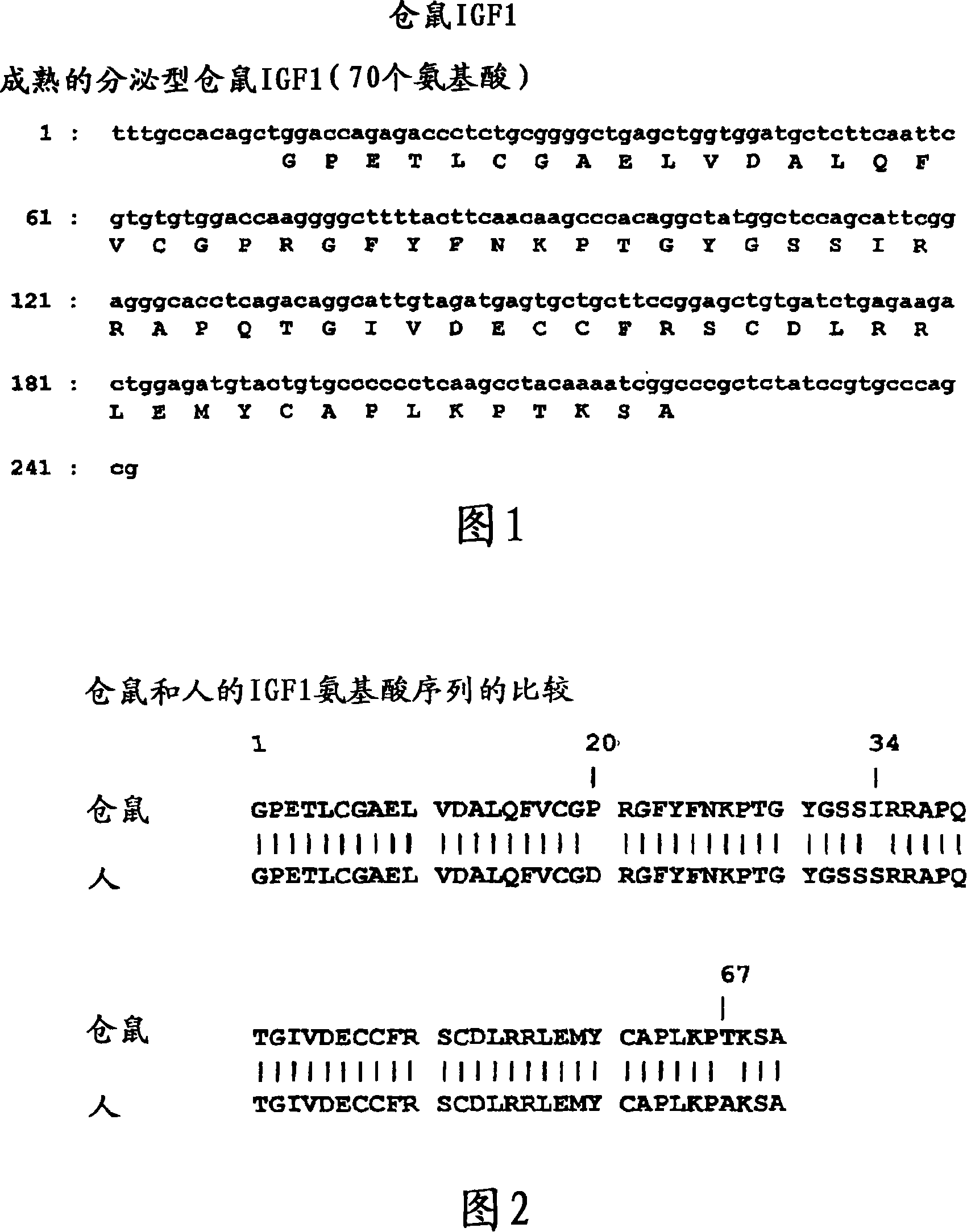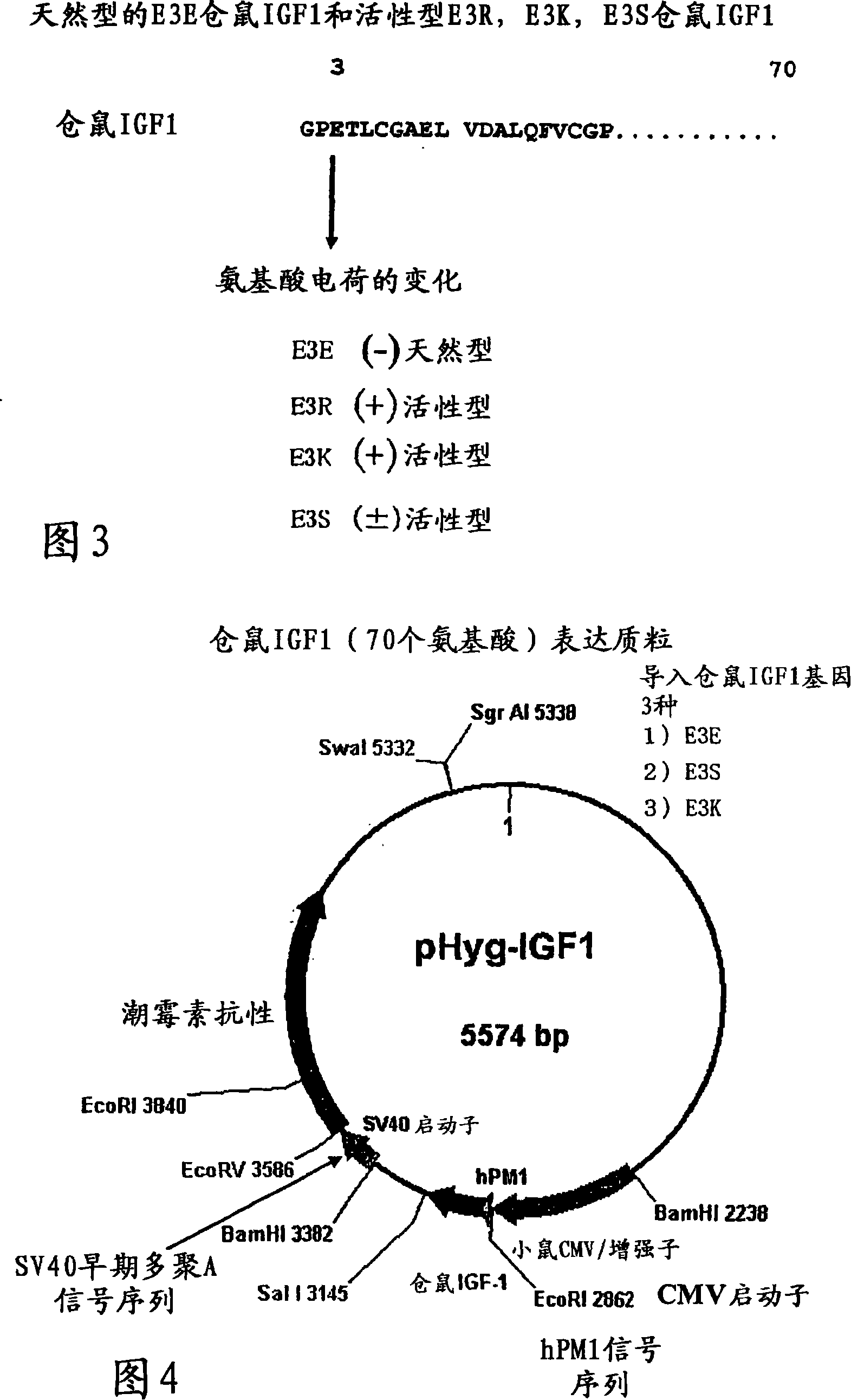Method of producing protein by using hamster IGF-1
An IGF-1, protein technology, applied in the field of preparing desired recombinant protein, can solve the problems of expensive serum, complex desired protein, pollution and the like
- Summary
- Abstract
- Description
- Claims
- Application Information
AI Technical Summary
Problems solved by technology
Method used
Image
Examples
preparation example Construction
[0166] In the production method of cells used in the production of various desired proteins described above, IGF-1 is preferably the polypeptide of the present invention.
[0167] The present invention further provides a method for screening cells for a desired protein comprising the steps of:
[0168] (a) a step of introducing DNA encoding a desired protein into CHO cells,
[0169] (b) a step of selecting a cell expressing a desired protein among the cells prepared in (a),
[0170] (c) a step of introducing DNA encoding IGF-1 into the cell selected in (b),
[0171] (d) A step of selecting cells expressing a desired protein and IGF-1 among the cells prepared in (c).
[0172] In the above screening method, IGF-1 is preferably the polypeptide of the present invention.
[0173] The gene encoding IGF-1 used in the method for preparing cells for producing a desired protein or the method for screening cells for producing a desired protein in the present invention is not particula...
Embodiment 1
[0177] Example 1: Cloning of cDNA encoding hamster IGF-1
[0178] (1) Synthesis of cDNA
[0179] Total RNA was extracted from anti-IL-6R antibody-producing cells in which an anti-interleukin-6 receptor (IL-6R) antibody gene was introduced into CHO-DXB11 cells (JP-A-8-99902, Reference Example 2). cDNA is synthesized from the resulting mRNA.
[0180] Specifically, proceed as follows. After 72 hours after passaging, about 5×10 cells in the proliferating phase 6 The CHO cells were centrifuged at 4°C and 1000rpm for 5 minutes, and the cells in the precipitated state were obtained at the bottom of the centrifuge tube without culture medium. Add 4ml of Sepasol-RNAI preheated at 65°C, and then use a pipette to quickly To dissolve, let stand at room temperature for 5 minutes. Further, 0.8 ml of chloroform was added, stirred well with a Voltex, and then left to stand at room temperature for 3 minutes. By cooling the centrifuge Avanti TM After J25 (manufactured by BECKMAN) was cen...
Embodiment 2
[0186] Example 2: Determination of the base sequence and amino acid sequence of the cDNA encoding hamster IGF-1
[0187] The gene sequence of the cloned gene was determined by a DNA sequencer, and the amino acid sequence was further determined, confirming that it encodes hamster IGF-1. The obtained amino acid sequence is shown in FIG. 1 and SEQ ID NO: 1, and the DNA sequence is shown in SEQ ID NO: 2.
[0188] The mature secreted IGF-1 of each species is composed of 70 amino acids, but the hamster IGF-1 gene has a specific sequence. Compared with human IGF-1, the 20th P (human: D), the 35th P I (human: S), the three amino acids of T (human: A) at the 67th position are different from human acids (Figure 2)
PUM
 Login to View More
Login to View More Abstract
Description
Claims
Application Information
 Login to View More
Login to View More - R&D Engineer
- R&D Manager
- IP Professional
- Industry Leading Data Capabilities
- Powerful AI technology
- Patent DNA Extraction
Browse by: Latest US Patents, China's latest patents, Technical Efficacy Thesaurus, Application Domain, Technology Topic, Popular Technical Reports.
© 2024 PatSnap. All rights reserved.Legal|Privacy policy|Modern Slavery Act Transparency Statement|Sitemap|About US| Contact US: help@patsnap.com










